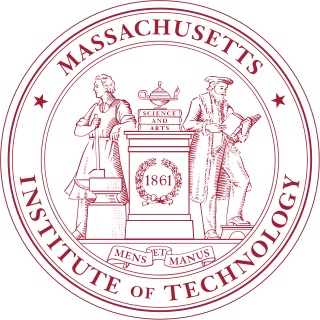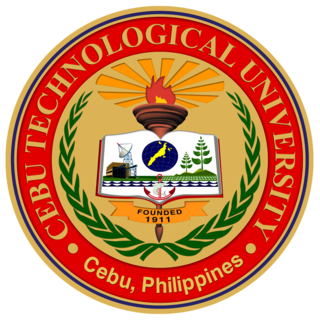
Grinnell College is a private liberal arts college in Grinnell, Iowa, United States. It was founded in 1846 when a group of New England Congregationalists established Iowa College. It has an open curriculum, which means students need not follow a prescribed list of classes. The college's 120-acre campus includes several listings on the National Register of Historic Places.

Harvey Mudd College (HMC) is a private liberal arts college in Claremont, California, focused on science and engineering. It is part of the Claremont Colleges, which share adjoining campus grounds and resources. The college enrolled 902 undergraduate students as of 2021 and awards the Bachelor of Science degree. Admission to Harvey Mudd is highly competitive, and the college maintains a competitive academic culture.

The Massachusetts Institute of Technology (MIT) is a private land-grant research university in Cambridge, Massachusetts. Established in 1861, MIT has played a significant role in the development of many areas of modern technology and science.

Rose–Hulman Institute of Technology (RHIT) is a private university in Terre Haute, Indiana. It was founded in 1874 with only three bachelor's degree programs. It has since grown to twelve academic departments with over thirty undergraduate and graduate degree programs in science, engineering, technology, and engineering management, leading to bachelor's and master's degrees.

Hampshire College is a private liberal arts college in Amherst, Massachusetts. It was opened in 1970 as an experiment in alternative education, in association with four other colleges in the Pioneer Valley: Amherst College, Smith College, Mount Holyoke College, and the University of Massachusetts Amherst. Together they are known as the Five College Consortium. The campus also houses the National Yiddish Book Center and Eric Carle Museum, and hosts the annual Hampshire College Summer Studies in Mathematics.

Wellesley College is a private women's liberal arts college in Wellesley, Massachusetts. Founded in 1870 by Henry and Pauline Durant as a female seminary, it is a member of the Seven Sisters Colleges, an unofficial grouping of current and former women's colleges in the northeastern United States.

Babson College (Babson) is a private business school in Wellesley, Massachusetts. Founded in 1919 with a focus on entrepreneurship education, Babson has ranked as offering the top undergraduate and graduate programs in entrepreneurship over several decades. The college was established by entrepreneur Roger W. Babson as an all-male institute focused on educating aspiring chief executives and business people seeking to maintain family businesses. It became coeducational in 1970.

Bates College is a private liberal arts college in Lewiston, Maine. Anchored by the Historic Quad, the campus of Bates totals 813 acres (329 ha). It maintains 600 acres (240 ha) of nature preserve known as the "Bates-Morse Mountain" near Campbell Island and a coastal center on Atkins Bay.

The Berklee College of Music is a private music college in Boston, Massachusetts. It is the largest independent college of contemporary music in the world. Known for the study of jazz and modern American music, it also offers college-level courses in a wide range of contemporary and historic styles, including rock, hip hop, reggae, salsa, heavy metal and bluegrass.

The University of Richmond is a private liberal arts college in Richmond, Virginia, United States. It is a primarily undergraduate, residential institution with approximately 3,900 undergraduate and graduate students in five schools: the School of Arts and Sciences; the E. Claiborne Robins School of Business; the Jepson School of Leadership Studies; the University of Richmond School of Law; and the School of Professional & Continuing Studies. It is classified among "Baccalaureate Colleges: Arts & Sciences Focus".

Wheaton College is a private liberal arts college in Norton, Massachusetts. Wheaton was founded in 1834 as a female seminary. The trustees officially changed the name of the Wheaton Female Seminary to Wheaton College in 1912 after receiving a college charter from the Commonwealth of Massachusetts. It remained one of the oldest institutions of higher education for women in the United States until men began to be admitted in 1988. It enrolls 1,669 undergraduate students.

Gordon College is a private Christian college in Wenham, Massachusetts. The college offers 44 majors, 55 concentrations, and 30 interdisciplinary and pre-professional minors as well as graduate programs in education, music education, public health and leadership. Gordon has an undergraduate enrollment of around 1,600 students representing more than 50 Christian denominations.

Beirut Arab University (BAU) (Arabic: جـامعة بيروت العربية, romanized: Jāmʻah Bayrūt al-ʻArabīyah) is a Lebanese private university mainly located in Beirut, Lebanon. It was founded by the Lebanese Waqf El-Bir wal Ihsan Society in 1960.
Need-blind admission in the United States refers to a college admission policy that does not take into account an applicant's financial status when deciding whether to accept them. This approach typically results in a higher percentage of accepted students who require financial assistance and requires the institution to have a substantial endowment or other funding sources to support the policy. Institutions that participated in an antitrust exemption granted by Congress were required by law to be need-blind until September 30, 2022.

In the United States, higher education is an optional stage of formal learning following secondary education. It is also referred to as post-secondary education, third-stage, third-level, or tertiary education. It covers stages 5 to 8 on the International ISCED 2011 scale. It is delivered at 3,931 Title IV degree-granting institutions, known as colleges or universities. These may be public or private universities, research universities, liberal arts colleges, community colleges, or for-profit colleges. U.S. higher education is loosely regulated by the government and by several third-party organizations.
Marshall B. Ketchum University is a private university focused on graduate programs in healthcare and located in Fullerton, California. MBKU expanded from the Southern California College of Optometry which was founded in 1904. The university was officially established as a multidisciplinary university with the addition of School of PA Studies in 2011 and College of Pharmacy in 2013. Along with Hope International University, the campus bookends the north and south sides of the Cal State Fullerton campus respectively.

Cebu Technological University, abbreviated as CTU and also known as Cebu Tech, is a public, non-sectarian, coeducational, state-funded higher education institution located in Cebu, Philippines. CTU was originally a part of the Philippine public high school system and traces its roots to the Manual Arts department of the Cebu Normal School, and was founded independently in 1911 as the Cebu Trade School. In 1928, the institution opened its own campus near the Port of Cebu, where its main campus still stands today.
The Tepper School of Business is the business school of Carnegie Mellon University. It is located in the university's 140-acre (0.57 km2) campus in Pittsburgh, Pennsylvania.

Ahmedabad University is a private university in Gujarat, India. Established in 2009 by the Ahmedabad Education Society, it comprises three schools and seven centres.

Simmons University is a private university in Boston, Massachusetts. It was established in 1899 by clothing manufacturer John Simmons. In 2018, it reorganized its structure and changed its name to a university. Its undergraduate program is women-focused while its graduate programs are co-educational.




















